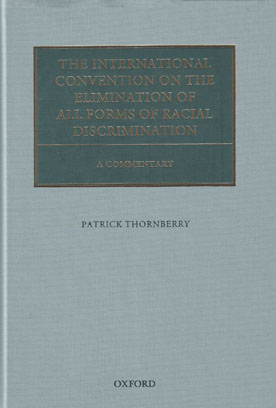
The Convention on the Elimination of All Forms of Racial Discrimination is the centrepiece of international efforts to address racial discrimination, defined in broad terms to include discrimination based on skin colour, descent, ethnic, and national origin. Victims of discrimination within the scope of the Convention include minorities, indigenous peoples, non-citizens, and caste or descent groups. Virtually all national societies are diverse in terms of ethnicity or 'race' and none is free from discrimination, making it one of the great issues of our time. Against the background of international human rights standards and mechanisms to counter racial and ethnic discrimination, this book provides the first comprehensive legal analysis of the provisions of the Convention on an article-by article basis.
The book addresses the place of the Convention within the broader framework of United Nation's action against discrimination. The different chapters analyse and discuss broad topics of race, ethnicity, and international law, the genesis and drafting of the Convention, the aims and objectives of the Convention in light of its preamble, and principles of non-discrimination and equality. In particular, the book includes a critical appraisal of the contribution of the Convention to the eradication of racial discrimination. It also reflects on whether there is scope for modification of the substance or procedures of the Convention in light of challenges arising from enhanced transnational population movements, the intersection between discrimination on the ground of race and discrimination against religious communities, and the intersection of racial and gender-based discrimination.